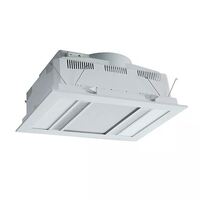
Martec Phoenix 3-in-1 Fan, Heater, Light & Exhaust
Model # MBHP1000W
$369.50 $335.91 ex GST

Need Help?
Need Help?

Martec Phoenix 3-in-1 Fan, Heater, Light & Exhaust
Model # MBHP1000W
$369.50 $335.91 ex GST
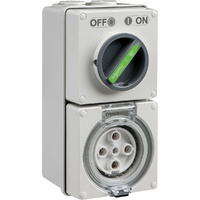
Clipsal Easy56 Round 5 Pin 32A Switched Socket
Model # EY56C532
$150.04 $136.40 ex GST

Clipsal Wiser Smart Smoke Alarm with 10 Year Lithi
Model # CLP599WSAL
$145.20 $132.00 ex GST
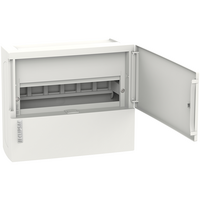
Clipsal Resi MAX 1 Row 12 Pole Surface Mount Switc
Model # RMXE112S
$44.33 $40.30 ex GST
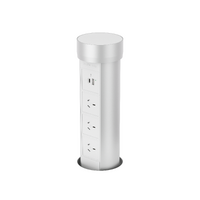
Point Pod Multi Pop Up Powerpoint 3 x Power 2 x US
Model # PPM01
$490.50 $445.91 ex GST
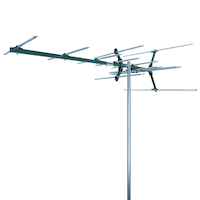
Matchmaster 03MM-DC21V Digital TV Antenna
Model # 03MM-DC21V
$137.50 $125.00 ex GST
 Click here to see our huge range
Click here to see our huge range
Date Posted:1 June 2023
However, with the large array of emergency lighting options available and the complex legislation, it can be difficult to know exactly what your building needs.
Put simply, emergency lighting is any lighting fixture that has an independent power source, such as a battery pack, so that it can remain illuminated in the event of a power failure. Therefore, these lights can help indicate the fastest and safest way out of a building if there is an emergency.
There are two key Australian standards you must follow when it comes to emergency lighting for a building the public uses. These are:
There is also an Australian standard for testing and maintaining emergency lighting, which we will go into a little more detail later.
These standards document how your emergency lighting needs to be set up, including that emergency lights need their own circuit, wherever they are in Australia. However, as general rules go:
Your building will affect what exact requirements you need to meet. This can include aspects like floor area and the class of building (for example, a hotel or a retail store). Regardless, as the owner of the building, it is your responsibility to ensure that all emergency lighting is correctly installed to meet the standards.
As a result, you need an experienced and reliable electrician installing this lighting. They need to understand the specificity of these standards to create a compliant design. This is because in the case of an emergency, being able to follow a clearly lit route can help avoid casualties and limit panic.
There are two ways to break down the different types of emergency lighting. Firstly, you can look at how and when they activate. In this grouping, you’ll find three key types
The other way to approach types of emergency lighting is by how they visually appear. This is because while emergency lighting needs to be clearly visible, they do not all have to look the same (with some exceptions).
Once your emergency lighting is correctly installed, your responsibility then becomes to ensure that it is well maintained and can be relied upon in an emergency. This is where AS/NZS 2293.2:2018 (Emergency lighting and exit signs for buildings, Part 2: Routine service and maintenance) comes into effect.
Following this standard, all your emergency lighting needs to be tested every 6 months. This test is to simulate power loss to the building. Therefore, to successfully pass, the emergency lighting must stay lit for a full 90 minutes, running on battery power alone.
In order to make this regular testing easier to complete, your emergency lighting may come with an automatic testing system and run the test itself, providing you with a readout or indicator if the lighting passed or failed the test. If your emergency lighting does not have such a feature, you will need to switch off the power to the lighting’s dedicated circuit and let it run using battery power for the full 90 minutes. You or a technician will need to check that the light passes the test.
If any lighting fails this test, it must be repaired or replaced. This can be as simple as changing the battery or LED strip. However, in terms of cost-effectiveness, it is sometimes better to replace the whole unit.
Failure to have compliant emergency lighting on your premises can lead to infringement notices, fines and even prosecution — not to mention endangering the lives of those who use the space. Therefore, the smart move is to have your emergency lighting installed by a competent and reliable electrician, then regularly tested.
To get you started on this journey, MJS Electrical Supplies has an extensive range of emergency lighting to choose from. With options from leading international brands, like Clipsal, you can get the very best in emergency lighting, setting yourself up for easy testing and effective compliance.




Add your favourites to cart

Select Afterpay at checkout

Log into or create your Afterpay account, with instant approval decision

Your purchase will be split into 4 payments, payable every 2 weeks
All you need to apply is to have a debit or credit card, to be over 18 years of age, and to be a resident of country offering Afterpay
Late fees and additional eligibility criteria apply. The first payment may be due at the time of purchase
For complete terms visit afterpay.com/terms
